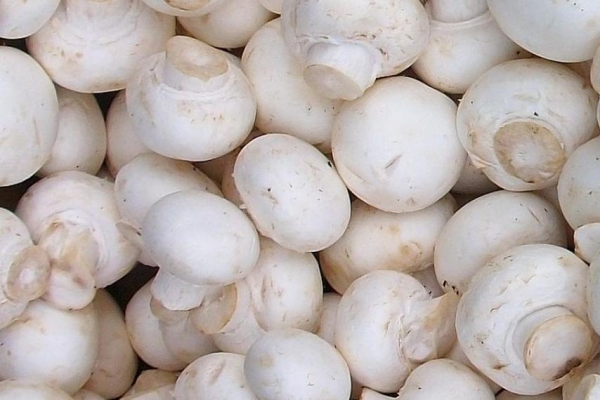Three kinds of mushroom are grown in India.
Button Mushroom
Popular mushroom grown all over world. Can be grown throughout year. White button mushroom is highly proteinaceous. It is consumed as fresh or canned. It also has medicinal property. Himachal Pradesh, Uttar Pradesh, Punjab, Haryana, Maharashtra, Andhra Pradesh, Tamil Nadu and Karnataka are major mushroom growing states.
November to March month is optimum period for growing of button mushroom in UP. For good growth, it requires temperature around 22-25oC, and at reproductive stage it requires temperature around 14-18oC.
Straw Mushroom
Straw Mushroom is the third popular mushroom variety grown all over world. They are grown on cotton waste mixed with small amount of straw. These are small mushroom having small cone shape cap. cap is dark brown at top. Its three species are cultivated V. diplasia, V. volvacea and V. esculenta in India. Out of these three species Volvariella volvacea is cultivated in Uttar Pradesh.
It is also known as “Chinese” or “Paddy” mushroom. These are largely grown in tropical and subtropical regions. It can grow at temperature of 35oC. April to September is optimum period for cultivation of straw mushroom.
Oyster Mushroom or Dhingri mushroom
Common and edible mushroom. It has tender flesh, velvety texture with mild flavor. It is a rich source of protein, fiber and vitamin B1 to B12. All the varieties or species of oyster mushroom are edible except P. olearius and P. nidiformis which are poisonous. Orissa, Karnataka, Maharashtra, Andhra Pradesh, Madhya Pradesh, West Bengal and most of the North-Eastern hill states are major states which are producing mushroom.
October to March is optimum period for growing of oyster mushroom. It survives well in moderate temperature range of 20-30oC with 80-85% relative humidity.
















